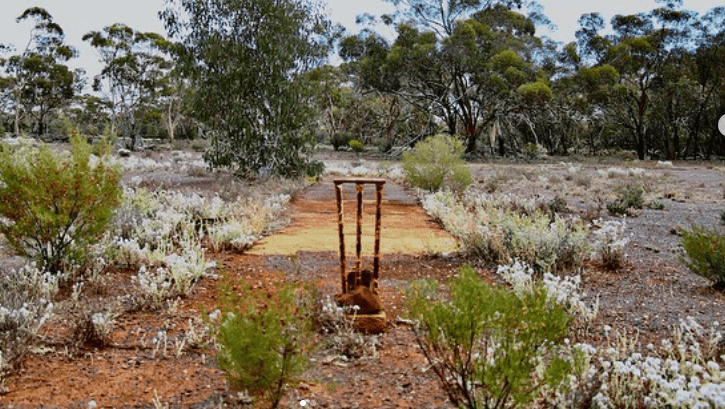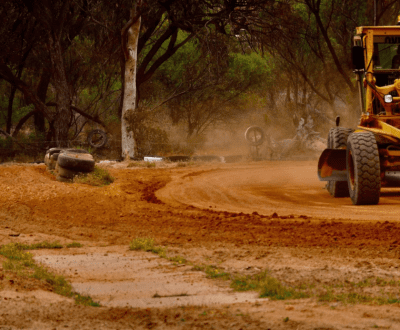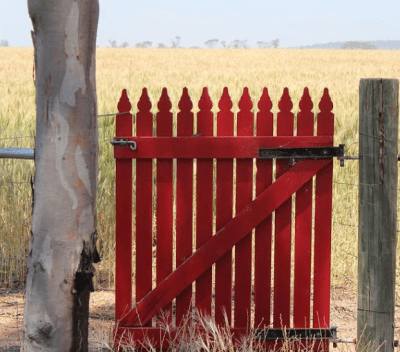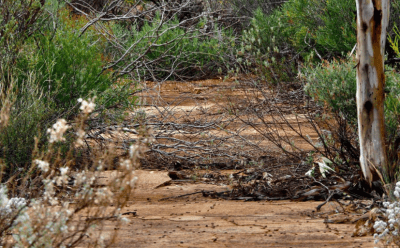
Amateur historian Les Everett has been tracking down abandoned cricket pitches on stations across the country. Photo: Les Everett
STANDING out in the searing hot summer sun chasing around a little red rock has been a source of fun for Australians over many years – particularly in the bush.
Cricket pitches have come and gone from towns and properties and left plenty of history behind in the form of crumbling concrete. An amateur historian from Western Australia has been trying to revive that history, with an Instagram page telling the stories behind the country’s abandoned cricket pitches.
Les Everett started out documenting abandoned scoreboards across the country on a page he called Scoreboard Pressure. He said the scoreboard travels led him to dozens of cricket pitches in peculiar places.
“Originally, we were looking at sporting fields around towns. But I have since had a lot of farmers get in touch to show me their cricket pitches,” Mr Everett said.
“We have a range of them from pitches they have made for their kids, to cricket ovals that have become defunct and acquired by a farm. Quite often the farmer will work around the pitch, I’ve seen times when they have put pegs around it to make sure it is not ruined at harvest.”

Les Everett says there are plenty of cricket pitches that still have a place on farms, even if they’re not used for cricket. Photo: Les Everett
Mr Everett said he has uncovered some interesting pieces of history in station cricket pitches he has uncovered – including the origins of Australian cricketing legend Doug Walters’ career.
“His father built a pitch on their property and Dungog for Doug and his mother and sister, who were also representative cricketers,” he said.
“Someone then sent me a photo of Doug playing on that pitch, from his book. I think the pitch is still there.
“I also saw one yesterday where the guy built a pitch beside his house with compacted ant beds – like what they do with tennis courts. Then he decided he would have a go at making a turf pitch and put some grass down, which didn’t work very well.
“He eventually decided to go for a permanent one and put down a concrete slab.”

Les Everett says a lot of abandoned cricket ovals have been acquired by farms over the years. Photo: Les Everett
Mr Everett said he had since been sent pictures of cricket from farms across Australia and, in some cases, overseas.
“I had one sent to me from Zimbabwe, where they were building a farmhouse and the workers had laid a pitch for themselves to play in their breaks,” he said.
Still part of cattle station culture
While the crumbling cricket pitches form a major of history in some places, they still play a huge in the culture of cattle industry today.
Many of the northern cattle companies host cricket days to bring the local community together. Games are held at Burke & Wills roadhouse and Urandangie in north-west Queensland – both pretty much out in the paddock.
But one of the biggest tournaments in the country is the Goldfield Ashes in the North Queensland town of Charters Towers – which fields about 200 teams, a lot of them from stations.
Until recently, one of the Goldfield Ashes games was held on Geoff Fordyce’s lifestyle block near the town. He said there was about 70 pitches in the area.
“There are so many little places around Charters Towers that have a one-off cricket game each year and they have pitches set up in all sorts of places. One of them is in the middle of the racecourse at Home Hill,” Mr Fordyce said.
“Because cricket is so time consuming, it’s hard to play year-round in a remote place like Charters Towers. But it’s great as a one-off community get together.
“Around this area cricket has grown in popularity a lot, the only thing that has slowed it down is COVID.”

Les Everett is hoping to publish a book about the role of cricket pitches in Australia’s history. Photo: Les Everett
While the Goldfield Ashes is still going strong, Mr Everett is hoping to document the years gone by in a book.
“The book will predominately be photos and I have found some stories from old local papers about the cricket competitions,” he said.
“I’ve also spoken to some people who will say stuff like ‘I think I might be the only person still alive who has played on this pitch’, so it is good to document that history.”
- If you have any pictures of cricket pictures on a property we are keen to see them. Paste them below with where they are from and what you know about them. Les is also keen to see more pitches and can be contacted on the Abandoned Cricket Pitches Instagram page or lesev@highway1.com.au



Do you have a photo of the cricket pitch used by solders during WW2 at Rottnest Island, I have a photo and further details f you would like them